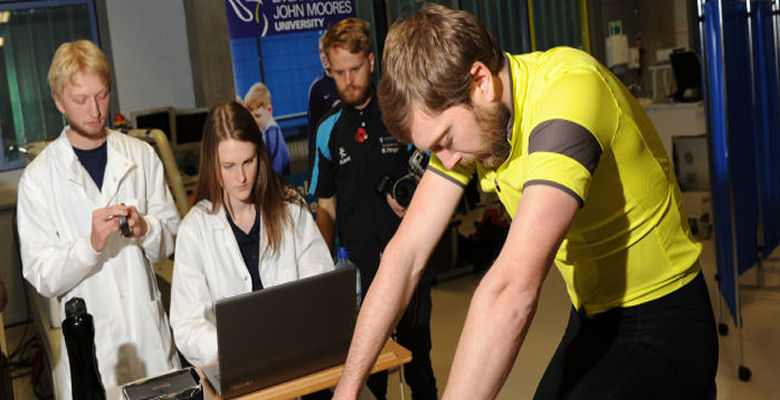World record attempt for fastest human powered vehicle

Applicants from across the country were tested for strength, stamina and endurance in special tests devised by Liverpool Hope University’s Dr Marwood, Dr Angell and students from LJMU alongside Professor of Applied Sport and Exercise Science Greg Whyte. The University of Liverpool’s Patrick Harper, Lead Ergonomics Engineer with the University of Liverpool Velocipede (ULV) Team, designed the bike.
This testing took place in LJMU’s Tom Reilly Building which offers some of the best facilities in the world for sport and exercise sciences and was supported by MSc Sport and Exercise Physiology students from LJMU, Matt Chadwick, Rebecca Monteith and Paul Colgan.
30 people applied to take on ten months of intensive training to reach the physical peak needed to ride the ARION1 Velocipede, an entirely pedal-powered aerodynamic bike which is being built by the ULV Team. When manufactured, the ARION1 Velocipede should be able to reach a top speed of 90mph and could generate enough power to light the average UK home. It weighs less than 25 kilos, is 98.4% efficient and will travel at almost double the current sprint cycling record. It will be 35 times more aerodynamic than a standard upright bicycle and the wheels will spin at over 1500 RPM.
Matt Chadwick LJMU MSc Sport and Exercise Physiology student said:
“The tests are designed to push the participants to their full physical potential, and test a variety of important attributes by utilizing different energy systems within the body. We have some great riders involved with the project and are increasingly confident that we can break the world record.”
The ULV team hopes to break the World Human Power Speed Challenge (WHPSC), held in Battle Mountain, Nevada in September 2015. The team will be the first university team from the United Kingdom to attempt the land speed record. They aim to smash the 83.13 mph record set in September 2013 by TU Delft and VU Amsterdam universities – but to do that they need the best possible riders.
To test their endurance, participants underwent in a ramp test, to indicate the maximal minute power (average power during final minute of a ramp). They also completed a three-minute bout of all-out exercise. Mathematical modelling was used to determine the physical requirements to break the record.
Liverpool Hope University’s Dr Peter Angell said:
“We combined the use of a normal, upright cycle and a recumbent bicycle during the training, gradually moving towards using the recumbent cycle more, until we're able to use the ARION 1 for parts of the training and testing. This is where the rider will begin to reach the record-breaking speeds required. We could potentially be training the fastest human on earth – to do that we need to help plan for every eventuality and ensure that the chosen athlete is at the optimum performance level.
Patrick Harper, Lead Ergonomics Engineer with the ULV Team said
“There are some really talented sports men and women being tested I am looking forward to seeing the athletes being put through their paces by the sports scientists from Hope and LJMU. After these tests we will be left with a difficult decision: who will ride our speed bike - the ARION1.”


